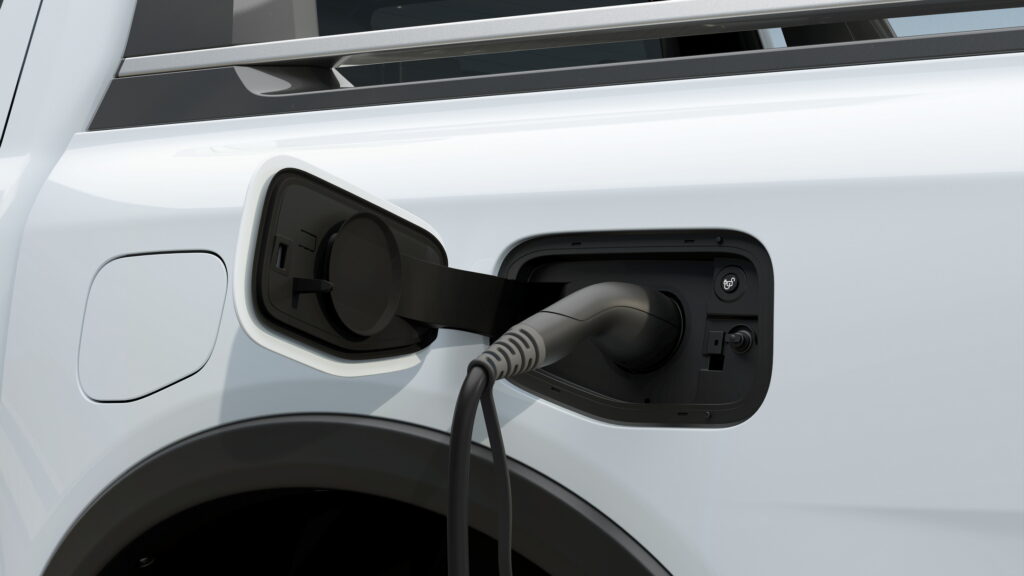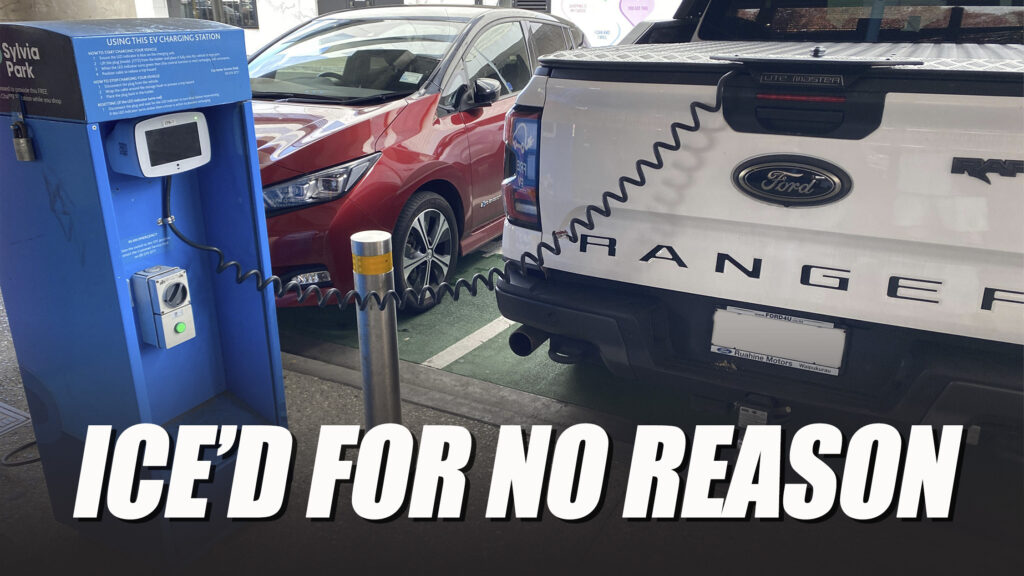- The driver of the ICE truck parked in a clearly-marked EV spot at a shopping center in New Zealand.
- They even made sure that the charging cable was inaccessible to EV and PHEV owners.
- This practice is commonly known as ICEing, causing unnecessary tensions between ICE and EV owners.
With so many EVs and PHEVs buzzing around, you’d think folks would have gotten used to their existence by now. Yet, some drivers persist in using their ICE-powered vehicles to block access to public chargers, like the Ford Ranger Raptor truck pictured here casually occupying an EV spot.
The latest chapter in this ‘rage against EVs’ saga unfolded at Sylvia Park Shopping Center in Auckland, New Zealand. Apparently, the driver of a gleaming white Ranger Raptor felt an overwhelming urge to, well, park their pickup truck in a clearly marked EV spot. Maybe they were aiming for a particularly charged protest? It’s hard to say with drivers who confuse inconvenience with effective activism.
More: Lamborghini And McLaren Supercars Caught ICEing Tesla Supercharger Station
Interestingly, the pickup driver even tucked the charging cable under the sliding cover of the rear bed, ensuring it was completely inaccessible to EV and PHEV owners at the shopping center. This little maneuver clearly shows it wasn’t just an innocent mistake. One might have thought they accidentally parked there, but no—this was a deliberate move
The green light on the charger indicates that the cable wasn’t connected to a charging port, which isn’t surprising since the Ranger won’t get a plug-in hybrid powertrain option until 2025. Moreover, the upcoming PHEV won’t, in all likelihood, come with the Raptor treatment and the charging port will be located in the fenders instead of the loading compartment.
Meanwhile at Sylvia Parks limited EV charging parks
byu/PlatypusImpressive35 inauckland
The photo was recently shared in the Auckland thread on Reddit, where it quickly garnered significant attention. Numerous commenters expressed frustration, with some jokingly suggesting deflating the truck’s tires or even using sharp objects to scratch its bodywork.
Others advocated for a more civil approach, recommending reporting the incident to the mall operator to have the ICE-powered vehicle fined or towed from the EV parking spot.
As the demand for EV and PHEV charging infrastructure grows globally, charging networks are expected to expand in the coming years. Hopefully, owners of ICE-powered vehicles will begin to respect designated markings and choose more appropriate parking spots.





